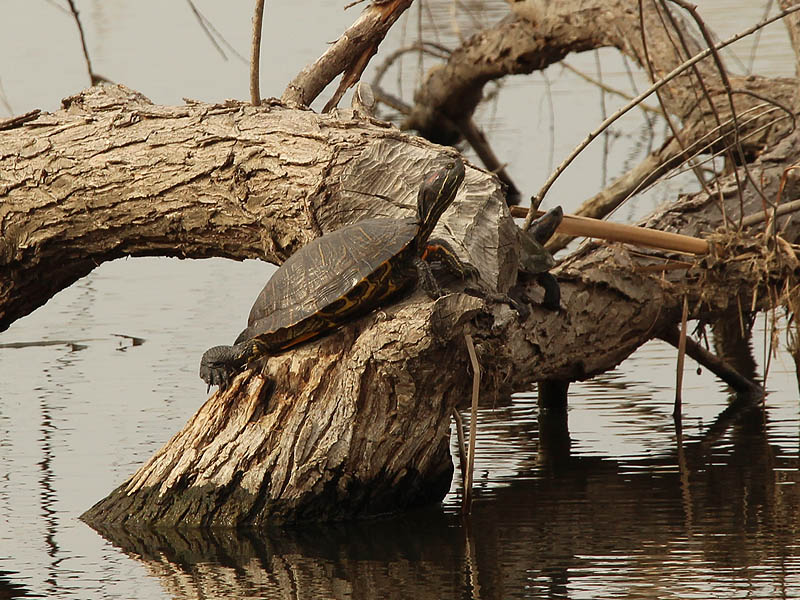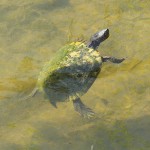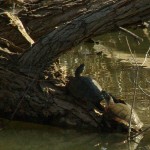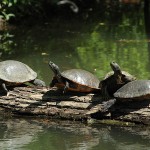Red-eared Sliders in a suburban Carrollton Beaver pond.
Wikipedia describes Red-eared Sliders in the following way:
The shell is divided into two sections: the upper or dorsal carapace and the lower, ventral carapace or plastron. The upper carapace consists of the vertebral scutes, which form the central, elevated portion, pleural scutes that are located around the vertebral scutes and then the marginal scutes around the edge of the carapace, the rear marginal scutes are notched. The scutes are bony keratinous elements. The carapace is oval and flattened (especially in the male) and has a weak keel that is more pronounced in the young.[10] The color of the carapace changes depending on the age of the turtle. The carapace usually has a dark green background with light and dark, highly variable markings. In young or recently born turtles, it is leaf green and gets slightly darker as a turtle gets older until it is a very dark green and then turns a shade between brown and olive green. The plastron is always a light yellow with dark, paired, irregular markings in the centre of most scutes. The plastron is highly variable in pattern. The head, legs, and tail are green with fine, yellow, irregular lines. The whole shell is covered in stripes and marks that aid in camouflaging an individual.








